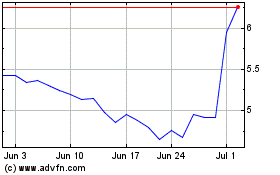Most Small Businesses Missing Opportunities to Reach Customers
September 12 2012 - 8:00AM
Business Wire
Small businesses are depending mainly on traditional
communications channels to market to customers and prospects, not
tracking results and missing opportunities to incorporate
multi-channel communications to increase those response rates and
get customers. Such are the findings of a Small Business Marketing
Survey recently conducted by Pitney Bowes Inc. (NYSE: PBI).
The survey of more than 750 of Pitney Bowes small business
customers was conducted with the goal of finding out more about the
customer communications channel preferences and marketing tools
used by small businesses and to determine if small businesses are
fully leveraging the tools they have in place.
“A surprising number of businesses are not tracking results of
communications they send to customers and prospects, particularly
through direct mail and email,” said Justin Amendola, vice
president, global SMB digital strategy, Pitney Bowes. “This is a
big missed opportunity for businesses who could instead help their
business grow by using any of a number of affordable, easy-to-use
communications tools to deliver and measure their marketing
programs.”
Missed Opportunities?
Pitney Bowes uncovered several opportunities for small
businesses to leverage existing and new marketing strategies to
grow their businesses.
- Measurement: Most small businesses are not
measuring the success of their marketing campaigns. They’re not
using readily available metrics to understand channel
effectiveness. An astonishing 73 percent of respondents fail to
measure their email marketing metrics, while 80 percent fail to
measure their direct mail or traditional mail metrics.
- Digital and
Social Media Channels: Small businesses heavily rely on
traditional channels for customer communications and may be missing
opportunities to use newer tactics such as social media. Email is
the most used channel, with 46 percent of respondents using it as
their primary channel for business communications, followed by
phone (22%) and direct mail (11%).
- Multi-channel
Approach: Businesses are slow to take advantage of the
power of integrated marketing and new channels. Of the larger
businesses surveyed (50-100 employees), none listed social media as
their primary channel. Those who did list social media as their
primary channel tended to be businesses with 10 or fewer employees.
Most notably, of those small businesses, the highest proportions
were those less than 10 years old. By incorporating a multi-channel
communications approach, businesses may see increased response
rates.
- Email: While businesses use email as their
most important communications channel, the number of businesses
leveraging the medium for marketing purpose is still fairly low.
While email is the top communications channel for small businesses,
many still aren’t taking full advantage of it for marketing
purposes. Respondents’ primary reason for using email was for basic
correspondence related to ongoing business (59%); however, the
number using email for sales and marketing is still fairly
low.
- Traditional
Mail: Businesses are already communicating with
customers using physical mail, such as invoices and statements;
however, only a small percentage of businesses are using that
traditional mail for sales and marketing. Only 18 percent of
respondents are using it for business development/marketing and 20
percent are including product information/updates. Given that bills
and invoices are guaranteed to reach current customers, it offers a
low-cost and highly effective option for deliver marketing messages
and promotional offers.
To download the complete results of the Pitney Bowes small
business marketing survey, go to
http://www.pbsmartessentials.com/small-business-marketing-survey-2012/.
About Pitney Bowes
Delivering more than 90 years of invention, Pitney Bowes
provides business communications software, mailing systems and
services that integrate physical and digital communications
channels. Long known for making its customers more productive,
Pitney Bowes is increasingly helping other companies grow their
business through advanced customer communications management.
Pitney Bowes is a $5.3 billion company with 29,000 employees
worldwide. Pitney Bowes: Every connection is a new opportunity™.
www.pb.com
Pitney Bowes (NYSE:PBI)
Historical Stock Chart
From Jun 2024 to Jul 2024

Pitney Bowes (NYSE:PBI)
Historical Stock Chart
From Jul 2023 to Jul 2024
